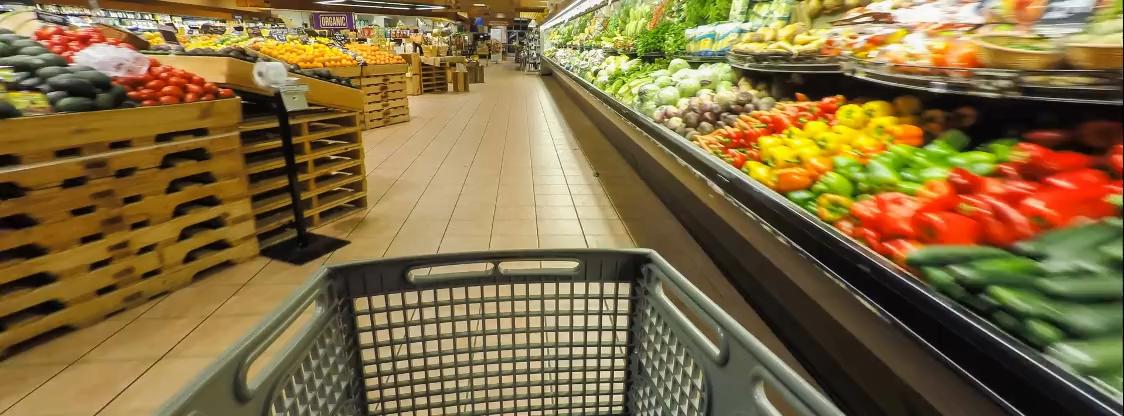Our annual study of online grocery shopping provides encouragement for grocers working to extend their presence beyond the physical store. With more shoppers ordering groceries online, and increasingly including fresh food in their digital baskets, supermarkets can – and should – move beyond simply taking and fulfilling online grocery orders to applying their unique strengths to the experience – just as they would in-store.
Some positive signs emerge from this year’s study, as supermarkets continue to see their customers place more orders online for pickup or delivery.
Satisfaction is on a positive course.
Overall satisfaction with the online grocery experience in 2019 was considerably higher among supermarket shoppers than it was in 2018. OSAT for Walmart and Amazon, while still stronger than supermarkets’ ratings, declined over the same period. On some attributes, notably human interaction at the pickup or drop-off point, supermarkets own a slight edge.
The study findings suggest supermarkets can continue to close the experience gap, and strengthen customer relationships, as overall satisfaction with an online grocery provider increases steadily over the course of time. Consider that first-time shoppers of any given online retailer rated their overall satisfaction just 4.15 (on a five-point scale), compared to 4.43 among users of 2-5 times, and 4.62 among experienced users (more than 5 times). Supermarkets, currently with the largest share of first-time users among online grocery shoppers, are thus positioned to improve their perception further on digital experiences.
Fresh food categories are growing in popularity.
While non-perishable groceries are still the most commonly purchased items, the fresh departments continue to grow popularity among online shoppers. More than 30% in our annual study now order dairy, frozen, bakery, and meat online, and 41% purchase produce. This shift theoretically benefits supermarket retailers who have long-standing fresh food expertise – procurement, distribution, merchandising and the like – that can resonate with their customers as those shoppers spend more of their grocery dollars online.
In the case of produce quality in particular, supermarkets would do well to lead the way toward higher satisfaction among online food shoppers. When we asked respondents which items left room for improvement in terms of quality, produce was the most-cited category (45%). The better-run supermarkets have long followed the in-store adage, “If you wouldn’t take it home to your own family, it shouldn’t be on the shelf.” That same standard should be applied to items picked for online orders as well.
In-store pickup benefits players with stronger service.
This year’s study finds an increasing share of online grocery orders being picked up in-store, which is consistent with other recent surveys of shoppers’ fulfillment preferences. This trend should benefit supermarkets, who lead Walmart and Amazon in ratings of both friendliness and knowledge of pickup staff. We also know from our annual in-store benchmark Grocery Experience Study that supermarkets are more highly regarded than Walmart across all the elements of the in-store experience. So with more online shoppers interacting with supermarket staff – at the very least providing a friendly, efficient exchange and potentially suggesting complementary add-on items for purchase – supermarkets can leverage their in-store strengths to raise sales or customer loyalty, or both.
But supermarkets beware: Out-of-stocks are relationship killers.
Finally, one cautionary finding from our research: Supermarkets are more likely (8% of orders) than Walmart (5%) or Amazon (3%) to fulfill an online order without all the requested items (or with an acceptable substitute). Even as grocers take advantage of the favorable online shopping dynamics mentioned above, it is imperative they get a handle on out-of-stocks before the issue curtails the growth of their online customer base. Especially with a delivery order, where a customer cannot add a substitute as needed, an unavailable item is a customer nuisance that can leave a dinner recipe incomplete or a child’s lunch missing a key component. Online shoppers are even less forgiving of stock-outs than in-store customers, when the item they seemingly “reserved” for purchase is, in fact, unavailable. It is akin to Jerry Seinfeld’s memorable objection when the car rental company “takes” but fails to “hold” his reservation.
Beware of life imitating art.
Written by Doug Madenberg, Principal, The Feedback Group

